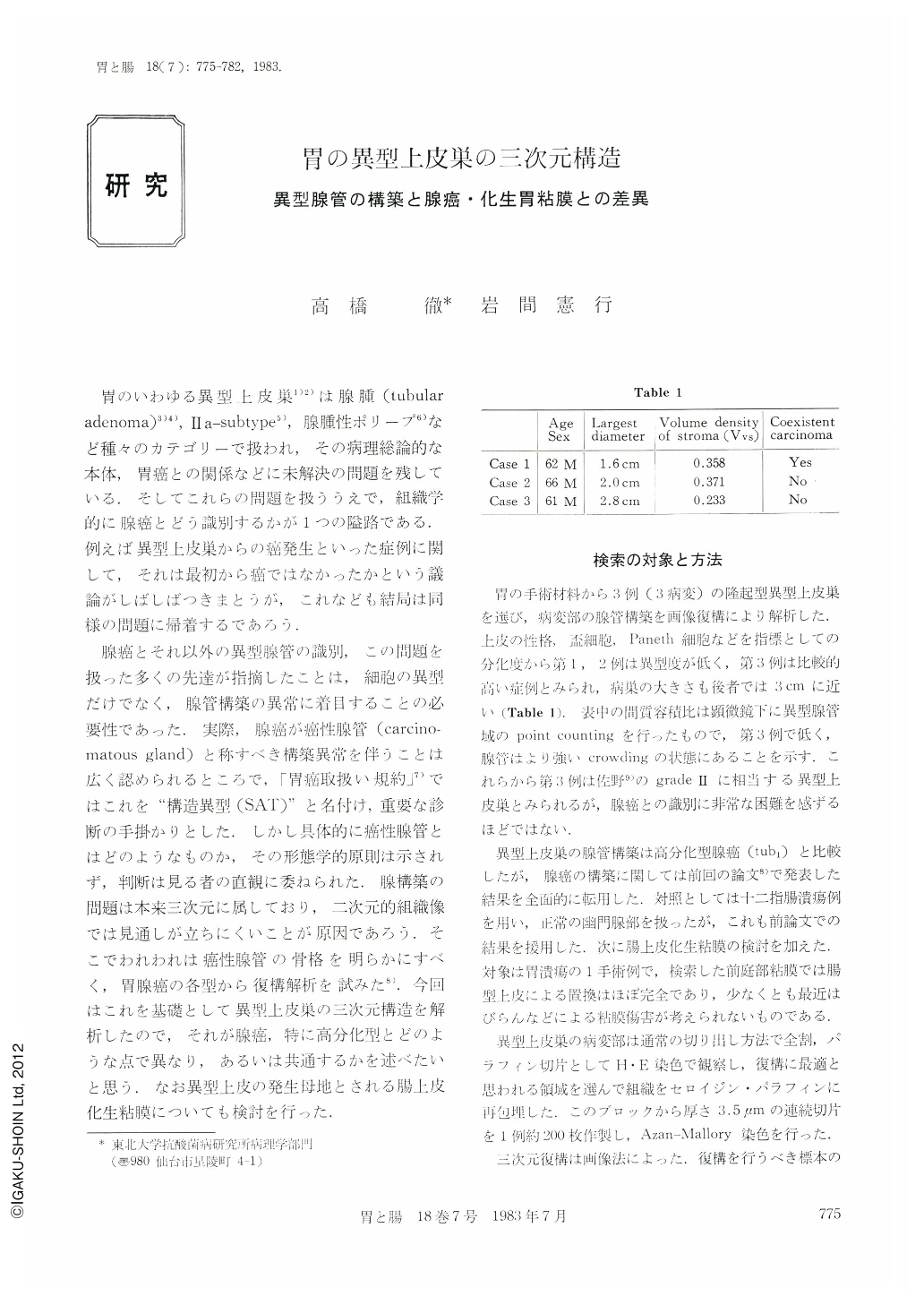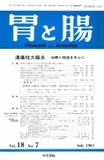Japanese
English
- 有料閲覧
- Abstract 文献概要
- 1ページ目 Look Inside
胃のいわゆる異型上皮巣1)2)は腺腫(tubular adenoma)3)4),Ⅱa-subtype5),腺腫性ポリープ6)など種々のカテゴリーで扱われ,その病理総論的な本体,胃癌との関係などに未解決の問題を残している.そしてこれらの問題を扱ううえで,組織学的に腺癌とどう識別するかが1つの隘路である.例えば異型上皮巣からの癌発生といった症例に関して,それは最初から癌ではなかったかという議論がしばしばつきまとうが,これなども結局は同様の問題に帰着するであろう.
腺癌とそれ以外の異型腺管の識別,この問題を扱った多くの先達が指摘したことは,細胞の異型だけでなく,腺管構築の異常に着目することの必要性であった.実際,腺癌が癌性腺管(carcinomatous gland)と称すべき構築異常を伴うことは広く認められるところで,「胃癌取扱い規約」7)ではこれを“構造異型(SAT)”と名付け,重要な診断の手掛かりとした.しかし具体的に癌性腺管とはどのようなものか,その形態学的原則は示されず,判断は見る者の直観に委ねられた.腺構築の問題は本来三次元に属しており,二次元的組織像では見通しが立ちにくいことが原因であろう.そこでわれわれは癌性腺管の骨格を明らかにすべく,胃腺癌の各型から復構解析を試みた8).今回はこれを基礎として異型上皮巣の三次元構造を解析したので,それが腺癌,特に高分化型とどのような点で異なり,あるいは共通するかを述べたいと思う.なお異型上皮の発生母地とされる腸上皮化生粘膜についても検討を行った.
Controversies remain as to the causal and sequential relation of gastric adenoma to carcinoma, and this is partly due to the difficulty in discriminating the atypical tubules usually found in adenoma histologically from well differentiated adenocarcinoma. Although it has been said that a diagnostic criteria for this differentiation should include not only cellular changes but also abnormal architecture of glands, the latter feature has not yet been studied into a definite formulation of structural changes. In view of this, gastrecromy specimens from three patients with a tubular adenoma were submitted to graphic reconstruction of atypical glands from serial histologic sections. Besides, a stomach with well differentiated adenocarcinoma and another with chronic metaplastic gastritis were added to the material.
Reconstruction disclosed that in tubular adenoma, unlike in metaplastic mucosa, the atypical tubules in the superficial zone of mucosa were multiply connected with the adjacent ones, forming a tubular network. The lumen also was connected at some places of tubular anastomosis. This three-dimensional architecture was quite similar to that of well differentiated adenocarcinoma of stomach, suggesting that adenoma was a miniature of adenocarcinoma from an architectural viewpoint, although its network skeleton was much coarser than in adenocarcinoma as revealed by the far lower number of anastomosis per 1 mm3. On the other hand, tubular adenoma was shown to contain giant glands with markedly increased number of ramifications, forming a complicated arborization. This, together with the formation of multiple microcysts at mucosal bottom, produced on two-dimensional histologic section a too much stressed abnormal pattern with kinking and twisting of overcrowded tubules. It was also shown that there did exist microcysts, though small in number, that were deprived of any draining route to the exterior.

Copyright © 1983, Igaku-Shoin Ltd. All rights reserved.


